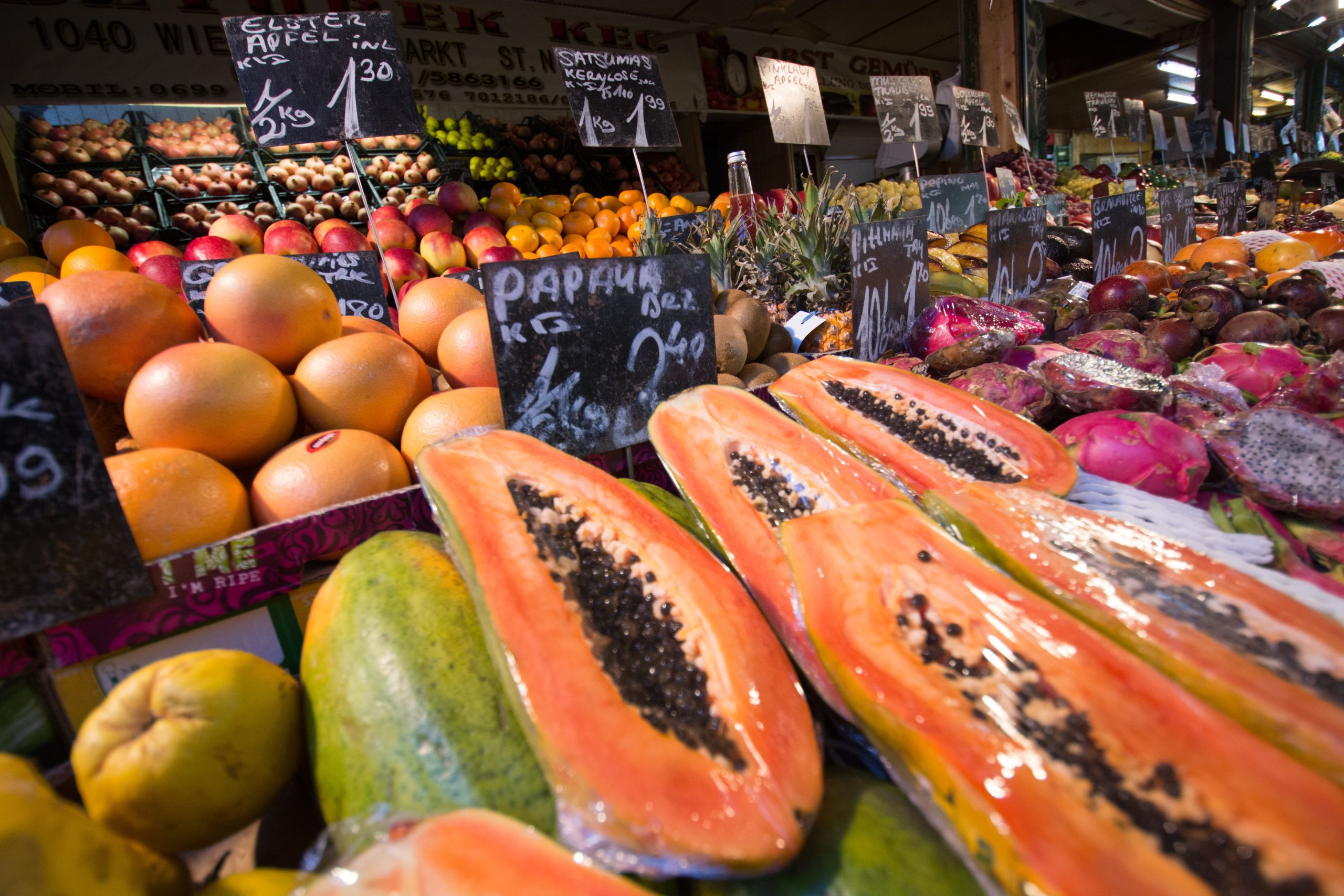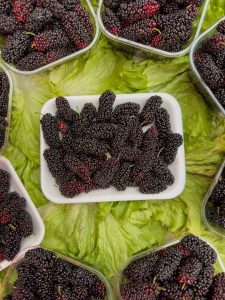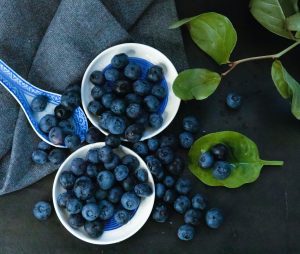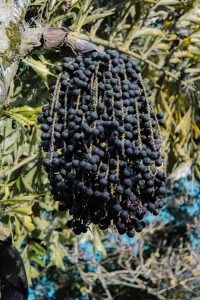
What Is a Papaya?
A papaya is a tropical fruit that belongs to the Caricaceae family. Scientifically known as Carica papaya, it is native to Central America but is now cultivated in various tropical and subtropical regions worldwide. The papaya tree produces large, elongated fruits with a soft, orange or pinkish flesh containing black, round seeds in the center. The flesh is sweet, juicy, and has a distinctive tropical flavor.
Papayas are known for their vibrant color, unique taste, and numerous health benefits. Rich in vitamins, particularly vitamin C and vitamin A, papayas also contain enzymes like papain, which aids in digestion. The fruit is enjoyed fresh, either on its own or in fruit salads, smoothies, and desserts. Additionally, papaya has culinary applications beyond its fruit, with the green, unripe papaya often used in savory dishes and salads.
Why Do We Eat Papayas?
We eat papaya for various reasons, primarily driven by its delicious taste, nutritional richness, and potential health benefits:
- Rich in Vitamins:
- Papaya is a rich source of essential vitamins, particularly vitamin C, which supports the immune system, and vitamin A, important for vision and skin health.
- Enzymes for Digestion:
- Papaya contains enzymes, such as papain, which aids in the digestion of proteins. This can be beneficial for those with digestive issues.
- Dietary Fiber:
- Papaya provides dietary fiber, promoting digestive health by supporting regular bowel movements and preventing constipation.
- Antioxidants:
- The fruit is rich in antioxidants, including beta-carotene, which helps neutralize free radicals and may contribute to overall health.
- Natural Sweetness:
- Papayas have a sweet and tropical flavor, making them a delicious and refreshing addition to meals, snacks, and desserts.
- Hydration:
- With a high water content, papaya contributes to hydration, particularly beneficial in hot climates.
- Versatility in Culinary Use:
- Papaya is versatile in the kitchen, suitable for consumption in various forms, such as fresh slices, fruit salads, smoothies, and desserts. Unripe papaya is also used in savory dishes.
- Weight Management:
- Due to its low calorie and high fiber content, papaya can be part of a balanced diet that supports weight management.
- Skin Health:
- The vitamins and antioxidants in papaya are beneficial for skin health, promoting a radiant and healthy complexion.
- Potential Anti-Inflammatory Properties:
- Some studies suggest that compounds in papaya may have anti-inflammatory effects, contributing to overall well-being.
In summary, eating papaya provides a delightful culinary experience, along with a range of essential nutrients and potential health benefits, making it a nutritious and flavorful addition to a well-rounded diet.
When Do We Eat Papayas?
Papaya can be enjoyed at various times and occasions, and its consumption is not strictly limited to specific periods. Here are some common instances when people often eat papaya:
- Breakfast:
- Sliced papaya can be a refreshing addition to breakfast, either on its own or as part of fruit salads, yogurt bowls, or smoothies.
- Snacking:
- Papaya is a convenient and healthy snack option, providing a sweet and satisfying alternative to processed snacks.
- Desserts:
- Papaya is commonly used in desserts, such as fruit salads, sorbets, and ice creams, adding a natural sweetness and tropical flavor.
- Lunch or Dinner:
- Papaya can be incorporated into savory dishes, especially when the fruit is unripe. Green papaya is often used in salads, curries, and salsas.
- Post-Exercise:
- The hydrating properties and natural sugars in papaya make it a suitable choice for a post-exercise snack to replenish energy and nutrients.
- Hot Weather:
- Due to its high water content, papaya is particularly refreshing during hot weather, making it a popular choice for a cooling snack.
- Fruit Juices and Smoothies:
- Papaya is often blended into fruit juices and smoothies, providing a tropical and sweet element to these beverages.
- Special Occasions:
- Papaya may be featured in special dishes or meals during festive occasions and celebrations.
- Dietary Cleanse:
- Some people include papaya in dietary cleanses or detox routines due to its digestive enzyme content and hydrating nature.
- Anytime as a Healthy Option:
- Papaya is versatile and can be enjoyed at any time of the day as a healthy and nutritious option.
Ultimately, the timing of eating papaya is flexible and depends on personal preferences, culinary creativity, and cultural traditions. Whether as a refreshing morning snack or a component of a savory dish, papaya offers a tropical and nutrient-rich addition to a balanced diet.
Ingredients of Papayas
Papayas, being a natural fruit, don’t have a long list of ingredients. Instead, they consist of various components that contribute to their taste and nutritional profile. Here are the main elements found in papayas:
- Water:
- Papayas have a high water content, contributing to their hydrating and refreshing nature.
- Natural Sugars:
- Papayas contain natural sugars, primarily fructose, which gives them their sweet taste.
- Vitamins:
- Papayas are rich in essential vitamins, particularly vitamin C, which supports the immune system, and vitamin A, important for vision and skin health.
- Minerals:
- Papayas provide minerals like potassium, which is crucial for maintaining proper fluid balance and supporting heart health.
- Dietary Fiber:
- While not particularly high in fiber, papayas do contribute some dietary fiber, promoting digestive health.
- Enzymes:
- Papayas contain enzymes such as papain, which aids in the digestion of proteins and can be beneficial for digestive health.
- Antioxidants:
- Papayas are a source of antioxidants, including beta-carotene, which helps neutralize free radicals and may have various health benefits.
It’s important to note that the specific nutritional content can vary slightly depending on the variety and ripeness of the papaya. Enjoying papayas in their natural state allows you to benefit from their nutritious components without any additional ingredients.
Types of Papayas
There are several varieties of papayas, each with its own unique characteristics in terms of size, shape, flavor, and color. Here are some common types of papayas:
- Solo/Dwarf Papaya (Carica papaya):
- Also known as Hawaiian papaya, Solo papaya, or Strawberry papaya, this variety is smaller in size with orange-red skin and sweet, reddish-orange flesh. It is a popular choice for its compact size and sweet taste.
- Maradol Papaya (Carica papaya):
- This type of papaya is larger than the Solo variety, with green skin that turns yellow as it ripens. The flesh is orange and has a sweet and musky flavor.
- Mexican Red (Carica papaya):
- This papaya variety has red-orange skin and vibrant orange-red flesh. It is known for its rich, sweet taste.
- Tainung Papaya (Carica papaya):
- Originating from Taiwan, the Tainung papaya is a hybrid variety. It is often larger than other papayas, with orange skin and sweet, orange flesh.
- Golden Papaya (Carica papaya):
- This variety has yellow-orange skin and sweet, golden-yellow flesh. It is known for its tropical and mild flavor.
- Sunrise Papaya (Carica papaya):
- Similar to the Solo variety, Sunrise papayas are smaller with orange skin and sweet, orange-red flesh. They are favored for their sweetness and tenderness.
- Kapoho Papaya (Carica papaya):
- This variety has orange skin and sweet, orange flesh. It is known for its smooth texture and delicious taste.
- Waimanalo Papaya (Carica papaya):
- Another Hawaiian variety, the Waimanalo papaya, has greenish-yellow skin and sweet, orange-red flesh.
- Eksotika Papaya (Carica papaya):
- This variety, often known as the Strawberry papaya, has red-orange skin and sweet, reddish-orange flesh. It is valued for its distinct sweetness and aromatic flavor.
These are just a few examples of the many papaya varieties available. The specific types may vary by region, and each offers a unique taste and texture for culinary enjoyment.
Signs of Ripe, Signs of Raw and Signs of Rotten Papayas
Signs of Ripe Papayas:
- Color:
- Ripe papayas exhibit a vibrant color. Depending on the variety, this can be yellow, orange, or reddish-orange. The skin should have a consistent hue without significant green areas.
- Texture:
- When gently pressed, a ripe papaya yields slightly to pressure. It should not feel overly soft or mushy.
- Aroma:
- Ripe papayas emit a sweet, tropical fragrance at the stem end. The aroma becomes more pronounced as the fruit ripens.
- Skin Appearance:
- The skin of a ripe papaya may show some wrinkles or indentations, indicating ripeness. However, excessive wrinkles or blemishes can be a sign of overripeness.
- Spoon Test:
- A ripe papaya can be easily scooped with a spoon, and the seeds inside should be dark.
Signs of Raw or Unripe Papayas:
- Color:
- Unripe papayas generally have a green or yellowish-green color. The skin may lack the vibrant hues associated with ripeness.
- Hardness:
- Unripe papayas feel firm to the touch and do not yield much when pressed. They have a harder texture compared to ripe ones.
- Lack of Aroma:
- Unlike ripe papayas, unripe ones may not have a distinct sweet aroma at the stem end.
- Smooth Skin:
- The skin of an unripe papaya tends to be smooth, without the wrinkles or indentations seen in ripe ones.
Signs of Rotten Papayas:
- Foul Odor:
- Rotten papayas emit a foul or fermented smell, particularly around the stem end or when cut open.
- Soft or Mushy Texture:
- Rotten papayas have a soft and mushy texture. Pressing on the skin may result in a noticeable indentation.
- Visible Mold:
- Mold on the surface or within the flesh is a clear sign of spoilage and rot.
- Discoloration:
- Dark or off-color patches on the skin or flesh can indicate rotting or deterioration.
- Leaking Liquid:
- Any liquid oozing from the papaya is a sign of internal breakdown and spoilage.
Checking these signs will help you select papayas at their peak ripeness for the best flavor and quality.
Summary
In summary, papaya is a tropical fruit belonging to the Caricaceae family, known for its delicious taste, vibrant color, and numerous health benefits. With varieties like Solo, Maradol, and Golden, papayas offer a range of flavors, from sweet and musky to tropical and mild.
Ripe papayas exhibit vibrant colors, a slightly yielding texture, a sweet aroma, and may show some skin wrinkles. Unripe papayas are firm, lack a sweet aroma, and have a smooth skin. Rotten papayas emit a foul odor, have a soft texture, visible mold, discoloration, and may leak liquid.
Consumed fresh or in various culinary applications, papayas are valued for their high vitamin content, digestive enzymes, and natural sweetness, making them a nutritious and flavorful addition to a balanced diet.






